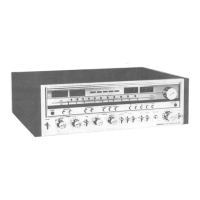
 Loading...
Loading...
Do you have a question about the Pioneer SX-1080 and is the answer not in the manual?
| Total Harmonic Distortion | 0.1% (at rated power) |
|---|---|
| Tuning Range | FM, MW |
| Damping Factor | 30 |
| Input Sensitivity | 2.5mV (MM), 150mV (line) |
| Output | 150mV (line), 1V (Pre out) |
| Speaker Load Impedance | 4Ω to 16Ω |
| Frequency Response | 5Hz to 100kHz |
| Signal to Noise Ratio | 90dB (line) |
| Semiconductors | 4 x FET, 6 x IC |
| Power Output | 120 watts per channel (8 ohms, 20Hz-20kHz) |